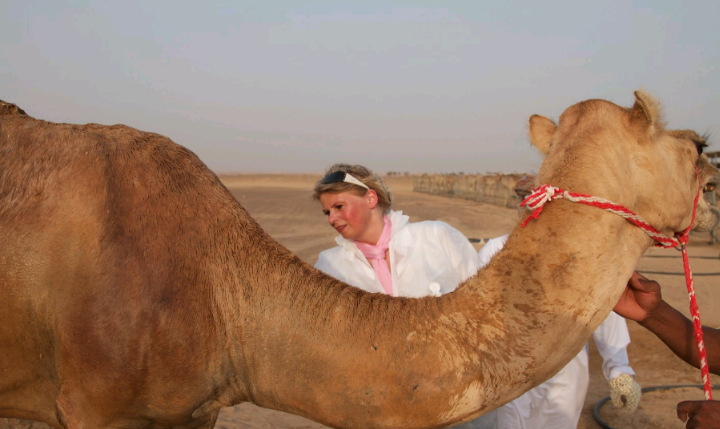A small parasite can kill Racing Camels.
401
0
·
2020/11/03
·
2 mins read
☕
WriterShelf™ is a unique multiple pen name blogging and forum platform. Protect relationships and your privacy. Take your writing in new directions. ** Join WriterShelf**
WriterShelf™ is an open writing platform. The views, information and opinions in this article are those of the author.
Article info
Date:
Published: 2020/11/03 - Updated: 2020/11/05
Total: 445 words
Like
or Dislike
More to explore









TRYPANOSOMIASIS IN CAMEL: An upcoming sickness in Gulf regions and Africa

03/11/2020
Abu Dhabi, United Arab Emirates
TRYPANOSOMIASIS IN CAMEL: An upcoming sickness in Gulf regions and Africa
Camels belong to camelidae family and are even-toed ungulates. Camels are mostly reared for draught purposes but they serve humans with meat and milk in many areas of the world. Here in United Arab Emirates the camels get used also for a beauty contest or a race. Camels are friendly and gentle creatures. By natural default, camels have adaptations to survive in the harsh and dry environment with low water availability such as deserts. Just like humans, there are various diseases which affect the well being and overall performance of camels. The diseases can be of different types such as infectious, metabolic, nutritional etc.
WHAT IS TRYPANOSOMIASIS?
This is a parasitic disease that is caused by a hemoflagellate parasite (blood-borne) that is transmitted to the host with the help of a vector fly.
Trypanosoma was first discovered in India by Evans. This protozoan parasite was identified in various animals’ species including horses, camels and mules.
Trypanosomiasis attacks the camels at any age (camels of all ages are susceptible). However, this has been observed that a high incidence of this infection prevails in juvenile camels after weaning.
There are a variety of signs and symptoms which infected camel shows. Here, we have summarized some key signs and symptoms:
1) Reduction in the body weight
2) Rough and dry body coat
3) Odema (accumulation of fluid) may occur in feet, eyelids, brisket and other areas of the body.
4) Fever with shivering.
5) Loss of appetite (Anorexia) along with mild diarrhea.
6) Lacrimation (watery/teary eyes) may be seen.
7) Camels become anemic progressively.
8) Pale mucous membranes due to anemia.
9) Characteristic smell/odor in the camel’s urine due to ketone bodies.
10) Abortion in pregnant female camels.
Trypanosomiasis is a disease of great economic importance in camels.
Trypanosomiasis considered a notorious blood-borne parasite that is responsible for this disease in camels. Camels show a variety of signs and symptoms including anemia, fever, tachycardia, dullness, loss of appetite and many more.
There are various molecular, serological, direct and indirect tests which show varying levels of specificity and sensitivity in camels. Treatment includes use of several drugs only under the supervision of a veterinary expert.
Author: Birgit Maria Kemphues is a German Holistic Veterinary Medical Doctor in the United Arab Emirates. She is involved as an honorable Doctor on many levels in scientific and economic dialogue between Europe and the Gulf Regions.
Birgit Maria Kemphues, Holistic VET Doctor,
P.O. Box 88323, Abu Dhabi - United Arab Emirates
Email: Media@Kemphues.com
Website: www.Kemphues.com